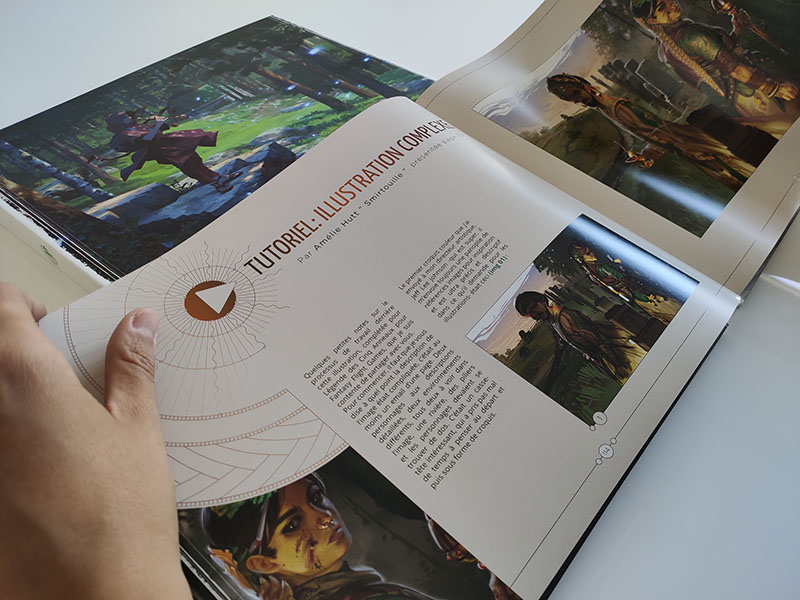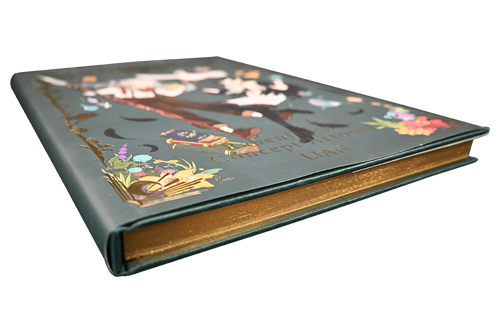Navigating the World of Art Book Printing: Idea for a Remarkable Complete
When it involves art book printing, you require to mix creativity with technical expertise for the best outcomes. You'll face selections that can make or damage your task, from picking the ideal printing method to selecting paper that improves your art work. However prior to you wrap up anything, there's a necessary step that can conserve you from expensive errors. Allow's discover what that is and how it can raise your art book.
Recognizing the Printing Process
When you submerse yourself worldwide of art book printing, understanding the printing procedure is vital for achieving your wanted results. Begin by familiarizing on your own with various printing techniques, like electronic and balance out printing. Each method has its staminas, so consider your task's range and spending plan.
Next, take notice of shade monitoring. Make sure your photos remain in the proper shade profile, as this affects exactly how they'll show up in print. You'll also wish to pick the appropriate resolution-- 300 DPI is standard for high-grade prints.
Do not ignore the significance of proofing. Always demand an evidence before the final print go to catch any errors or inconsistencies in shade. Bear in mind that timing issues. Go over manufacturing timelines with your printer to assure your task remains on schedule. Comprehending these elements can considerably boost the high quality and general appearance of your art book.
Picking the Right Paper
Choosing the right paper can considerably impact the general feel and look of your art book. You'll intend to assess aspects like weight, texture, and surface. A heavier weight paper can offer your pictures an extra glamorous look, while lighter papers might feel extra delicate.
Texture plays a vital role also; glossy paper improves shades and detail for dynamic pictures, while matte paper offers a much more controlled and artistic look. Consider how you desire your art work to be perceived-- do you favor sharp contrasts or softer sides?
This will help you picture how your art interacts with various papers. Remember, the ideal choice can boost your book from regular to amazing, ensuring your innovative vision shines via in every web page.
Checking Out Binding Options
When it comes to binding your art book, you've obtained a number of choices to consider that can influence both the feel and look of your project. Think about the durability features you require, as well as the cost ramifications of each binding technique. Picking the right binding can elevate your artwork and assure it lasts for several years to come.
Sorts Of Binding Approaches
There are a number of binding techniques to ponder for your art book, each offering one-of-a-kind benefits and looks. If you're searching for a smooth finish, best binding is an exceptional selection, supplying a professional appearance with a tough back. For an extra creative touch, think about spiral binding; it enables your book to lay flat, showcasing your art work perfectly. If you choose a typical feeling, case binding provides you a sturdy hardcover alternative, ideal for premium prints. Saddle stitching is one more choice, perfect for thinner publications and supplying a clean and minimalistic appearance. Each binding method has its beauty, so assume about your book's function and target market to select the one that best matches your vision.

Selecting Longevity Attributes
After taking into consideration the different binding techniques, it's time to concentrate on durability functions that can boost the durability of your art book. If you anticipate your book to sustain regular handling, decide for products like laminated covers or covered paper, which resist wear and tear. Prioritize these features to keep your art book looking beautiful.
Price Implications of Binding
While choosing a binding alternative for your art book, it's essential to ponder just how each option impacts your budget plan. Saddle stitching is much more affordable, suitable for smaller sized publications, yet it may not suit bigger jobs. Eventually, selecting the right binding alternative can improve your art book's presentation without breaking the bank.
Creating for Publish
When designing for print, you need to prioritize clearness and visual impact to effectively display your art work. Start by choosing a color scheme that enhances your pieces, ensuring it converts well theoretically. Shades may appear in a different way in print than Visit This Link on-screen, so pick shades that maintain vibrancy when published.
Use high-resolution images to avoid pixelation; go for a minimum of 300 DPI for peak high quality. Consider your typography very carefully-- choose fonts that improve your art without subduing it. Maintain a balance between message and visuals, ensuring that neither sidetracks from the other.
Focus on layout and white area, as these elements lead the viewer's eye and produce an unified flow. Finally, think regarding the dimension and measurements of your book; it should enhance your artwork, not constrict it. By focusing on these facets, you'll create a spectacular print style that captivates your target market.
Proofing Your Art Work
When you have actually completed your style, it's time to proof your art work to confirm every little thing looks as meant. If your artwork is dynamic on-screen, but boring on paper, modifications may be required.
Print a test evidence to see how your style equates to paper. This step supplies valuable insights right into shade, comparison, and design. Don't be reluctant to ask for feedback from relied on peers or coworkers-- they may capture problems you ignore. Make particular your art work sticks to any type of details guidelines your printer needs, such as hemorrhage and cut lines. An extensive proofing process warranties that your end product mirrors your difficult work perfectly.
Working With a Printer
When you prepare to print your art book, locating the appropriate printer is important. You'll need to plainly interact your vision and comprehend the printing requirements to ensure everything ends up as expected (art book). Let's discover how to make this process smooth and successful
Choosing the Right Printer
Choosing the best printer can make all the distinction in bringing your art book vision to life. Research local and online printing firms, paying focus to their profiles and client reviews. You desire a printer experienced in art books, as they'll understand the subtleties of recreating your art work consistently.
Communicating Your Vision
To assure your art book comes out simply as you envision, it's important to interact your vision plainly with your printer. Begin by sharing your innovative principle, consisting of themes, shades, and any type of certain components you want highlighted - art book. Be open about your spending plan and timeline; this assists your printer give realistic options.

Recognizing Printing Specs
With your vision plainly expressed, it's time to concentrate on the technological side of publishing your art book. Comprehending printing specs is essential for achieving the best result. Beginning by discussing your preferred paper kind; alternatives like glossy or matte can significantly impact the visual appeal. Next, think about guide's measurements-- common dimensions are typically much more cost-effective, yet custom-made dimensions can boost your unique design. Do not neglect to examine the resolution of your pictures; they should go to the very least 300 DPI for crisp prints. Clarify your color preferences-- CMYK is standard for print, while RGB is used for digital. By knowing these specs, you'll assure a smoother cooperation with your printer and a stunning end product.
Marketing Your Art Book
Advertising your art book efficiently can make all the difference in reaching your target market and boosting sales. Are they art enthusiasts, enthusiasts, or students? Showcase your artwork, share click site behind-the-scenes material, and involve with your followers through stories and messages.
Take into consideration holding a launch event or joining art fairs to get in touch with prospective purchasers straight. Team up with influencers or blog writers in the art neighborhood to expand your reach. Don't undervalue the power of email advertising and marketing; develop a mailing listing to keep interested readers updated.
Ultimately, utilize online marketplaces and your site for straight sales. Offer minimal editions or unique promos to develop necessity. By combining these approaches, you'll enhance presence and drive sales for your stunning art book.
Frequently Asked Concerns
What Is the Ordinary Expense of Art Book Printing?
The standard expense of art book printing differs commonly based upon factors like size, page count, and products. Normally, you're looking at anywhere from $10 to $50 or even more per book, relying on your choices.
The length of time Does the Printing Refine Commonly Take?
The printing procedure normally takes concerning 2 to 4 weeks, depending on the job's complexity and volume. You'll need to consider design, proofing, and possible modifications to assure whatever meets your assumptions.
Can I Publish a Minimal Version of My Art Book?
Yes, you can publish a limited edition of your art book. Simply decide the number of copies you want, choose a quality printer, and assure you've got the appropriate materials to create an unique feeling.
What Documents Formats Are Best for Publishing My Art Work?
For printing your artwork, use high-resolution files like TIFF or PDF. Avoid JPEGs for final prints, as they can shed information.
How Can I Guarantee Color Precision in My Printed Schedule?
To guarantee shade accuracy in your published book, use an adjusted monitor, soft proof your documents, and select a reliable printing service. you could try these out Consider using RGB or CMYK shade modes as needed for your artwork.
 Edward Furlong Then & Now!
Edward Furlong Then & Now! Andrew Keegan Then & Now!
Andrew Keegan Then & Now! Ashley Johnson Then & Now!
Ashley Johnson Then & Now! Keshia Knight Pulliam Then & Now!
Keshia Knight Pulliam Then & Now! Rossy de Palma Then & Now!
Rossy de Palma Then & Now!